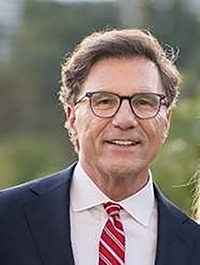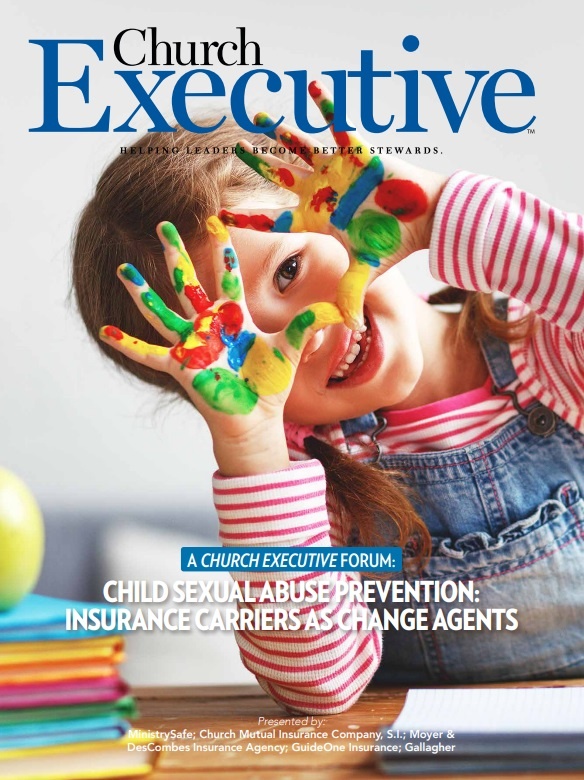
 Church Executive talks with a journeyed risk management thought leader for religious organizations
Church Executive talks with a journeyed risk management thought leader for religious organizations

Global Managing Director, Nonprofit / Religious Practices
Gallagher
Church Executive: Last year, Gallagher created an initiative called Transforming the Trend. What is it, and what was the burden to pursue it? How did Gallagher decide who to bring to the table?
Peter A. Persuitti: Within Gallagher, three different verticals are ‘swimming’ in youth in terms of those they serve: higher education, the public sector (public schools), and nonprofits/faith-based. So, it seemed stronger and more powerful to lift up these three verticals internally. And it allowed us to go to our corporate leadership to seek support and funding, which we received.
Primarily, we were driven by survivors who need to be heard, by the lack of capacity in insurance coverage, and perhaps, in some ways, by the lack of traction in organizational cultural commitment to change and sustained awareness-building.
We consulted with some of the top in this specialized area to engage them as advisors. Our goal was to gather a group that would represent the three sectors and allow us to really find common ground going forward, maybe giving carriers more confidence in the exposure, which is youth and youth protection.
We were seeing limits being reduced by carriers. We were watching some of these ‘nuclear’ verdicts come out, some of them from school pools, some of them older occurrences, in terms of the different faith traditions.
That internal collaboration led each of us to look at how we represent these three constituencies and allowed us then to work with a consultative group, including a former FBI agent who is now a specialized consultant out of Southern California. This was the caliber of people who became our advisors.

Then, each of the three of us representing these sectors brought a list of cohort leaders and practitioners to the table. We began to galvanize this collective group with initial meetings around how the agenda might look.
We finalized an agenda for two days — one day focused on the voice of survivor, ethics and so on, and the other day on organizational duty of care. We ultimately commissioned a report that is available at www.ajg.comtransformingthetrend.
But it’s definitely an ongoing effort, just the beginning of a sustained movement of collaboration and betterment
CE: On paper, Gallagher is an insurance broker — one of the largest in the world. But Gallagher seems to be very active in the betterment of ministries, churches, nonprofits and those in positions of service. Where does this ‘heart for others’ come from?
Persuitti: Well, it’s interesting. We’re a Fortune 500 company with more than 46,000 employees around the world. We’re not only a broker, but we’re obviously a consultative risk management advisor. We have services all over the world focused as well on leadership, executive search and HR consulting. Affinity programs and risk pooling are leveraged services that empower our clients. Our culture is galvanized in helping others. “We run to problems — not away from them” is one of the 26 tenets of “The Gallagher Way.”
But I think the heart comes from the Our Lady of the Angels school fire in Chicago in 1958. At that time, Gallagher was a regional broker, but we really ended up setting the standards of school safety relative to fires. Nearly 100 lives were lost — children, nuns, teachers — and Gallagher went to the archdiocese in Chicago because they were woefully underinsured at the parish level. We demonstrated the power of coming together, created one big master policy for their more than 300 subsidiaries; in fact, we recently celebrated more than 50 years with the archdiocese pooling all their various entities and utilizing alternative risk financing strategies.
What I love about the ‘heart for others’ at Gallagher is to watch how our employees mobilize to match their own philanthropy right into the nonprofit sector. Every office (more than 700 around the world) is attending and supporting charity events. They’re feeding the hungry. They report it up on our internal portal. I see all this stuff, and it’s amazing. It’s just within our culture to serve.
CE: Even in the Transforming the Trend resources offered online, we see a lot of references to judgments against schools (both K-12 and college), which can reinforce the notion among church leaders that sexual abuse “happens elsewhere.” What’s the reality?
Persuitti: Maybe the public sector has been more dramatized in terms of nuclear verdicts, but sexual abuse is happening everywhere, including in the Church.
I do have some frustration that youth-serving organizations in particular aren’t taking the threat seriously or realizing that this is a duty. There’s no excuse, even though they may be short on resources. Even in my children’s youth sports groups, they talk about having been trained to be aware of this societal epidemic and know the warning signs and where to report.
This is an issue, and we need to do better in our making a commitment to youth each and every day. It never ends, our commitment.
CE: In your Transforming the Trend Symposium Report, you note that “most organizations operate from a state of compliance” — which sounds like a positive assessment but isn’t entirely. Why not?
Persuitti: When I hear the word ‘compliance,’ the heart isn’t in it; it’s robotic. We talked about ‘heart’ earlier in the conversation. Meanwhile, compliance is something that insurance carriers, governments and society seem to understand when it comes to audits and compliance as a concept. But for me and for many others, it’s a heartless checklist, and there’s a sense that when you finished it, then you were done.
We’ve got to move the dime from compliance to commitment.
Compliance will always be something that regulatory bodies look for, but this isn’t just a checklist; it’s not just an audit. It’s really a mindset, understanding whether or not the organizational culture is committed to protecting youth.
CE: This Forum is about the impact Insurance Carriers can make related to child safety. In what ways are BROKERS uniquely positioned to introduce change?
Persuitti: At the end of the day, a specialized advisor like Gallagher has the resources to help put a framework in place. Because insurance should follow risk management. It shouldn’t be insurance first and then risk management. So, we do all that we can to make sure our consultants are equipped and that we tell the story as advocates.
— Reporting by RaeAnn Slaybaugh


